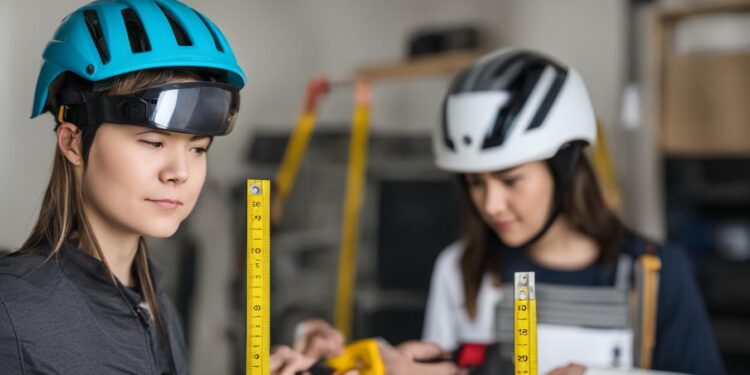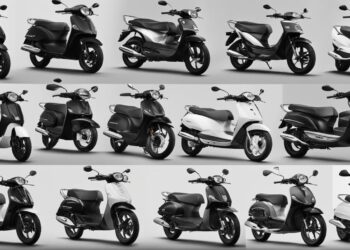Welcome to my comprehensive guide on helmet sizing! As a professional copywriting journalist, I understand the importance of finding the perfect fit for your helmet. Wearing a properly fitted helmet is crucial for your safety and can give you confidence while riding. In this guide, I will take you through everything you need to know about helmet sizing, including measuring your head size, understanding helmet size charts, and ensuring a proper fit.
- Helmet sizing is crucial for your safety while riding.
- Understanding helmet sizes and measurements is essential for finding the right fit.
- Measuring your head accurately is the first step in determining helmet size.
- Decoding helmet sizing and ensuring a proper fit can enhance safety and comfort.
- Choosing the right helmet style and brand based on your head measurements is important.
Understanding Helmet Sizes: A Complete Breakdown
Before you can find the perfect helmet size, it’s essential to understand how helmet sizes work. Helmet sizes are typically measured in inches or centimeters and correspond to the circumference of your head at its widest point.
Most helmet manufacturers provide a size chart that indicates the range of head sizes each helmet size can accommodate. It’s important to note that helmet size charts may vary by brand and model, so it’s crucial to check the specific manufacturer’s size chart before buying a helmet.
| Helmet Size | Head Circumference (inches) | Head Circumference (centimeters) |
|---|---|---|
| XS | 20 7/8 – 21 1/4 | 53-54 |
| S | 21 5/8 – 22 | 55-56 |
| M | 22 3/8 – 22 3/4 | 57-58 |
| L | 23 1/8 – 23 1/2 | 59-60 |
| XL | 24 – 24 3/8 | 61-62 |
| XXL | 24 3/4 – 25 1/8 | 63-64 |
As you can see, each helmet size accommodates a range of head sizes, so it’s crucial to measure your head and compare it to the manufacturer’s size chart to determine the best fit.
It’s also important to note that helmet sizes may vary depending on the helmet’s intended use. For example, a helmet designed for racing may have a tighter fit to reduce wind resistance, while a touring helmet may have a looser fit for increased comfort during long rides.
Now that you know the basics of helmet sizing, it’s time to dive into how to measure your head accurately for a helmet.
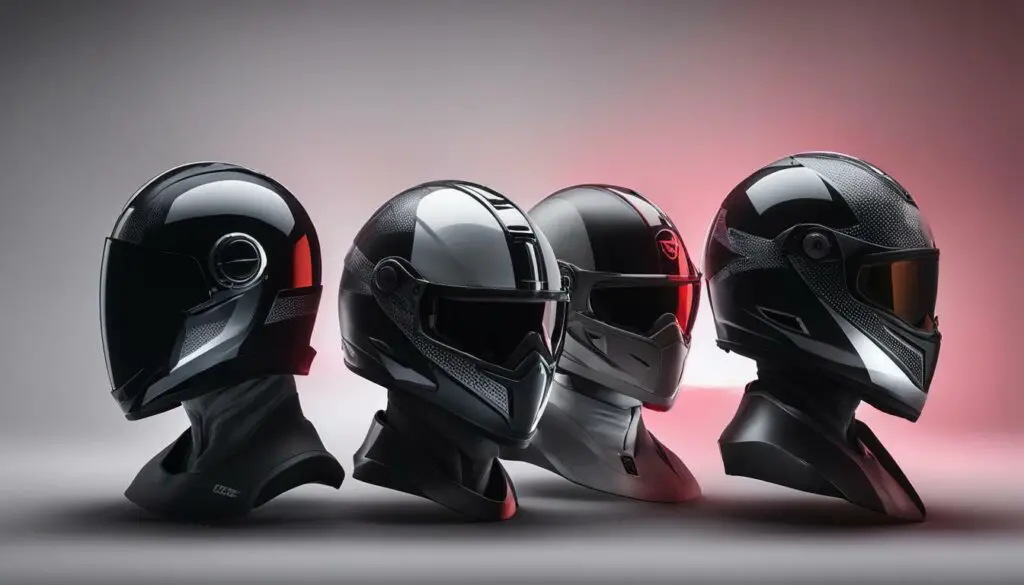
Accurately measuring your head is crucial for finding the right helmet size. Here’s how to measure your head for a helmet:
- Choose the Right Measuring Tape: Use a soft measuring tape, ideally one used for sewing, to measure your head.
- Determine the Placement: Position the tape measure just above your eyebrows, making sure it’s parallel to the floor.
- Wrap the Tape: Wrap the tape measure around the widest part of your head. This is typically above your ear and at the widest point at the back of your head.
- Record Your Measurement: Take note of the measurement in both inches and centimeters to ensure accuracy.
It’s important to note that head shapes can also impact the fit of a helmet. Some individuals may have rounder heads, while others have longer or more oval-shaped heads. Understanding your head shape can help you choose a helmet that fits comfortably.
Additionally, some helmets may come with additional padding that can be added or removed to adjust the fit. If your helmet comes with this option, make sure to try the helmet on with and without the added padding to determine the best fit for your head.
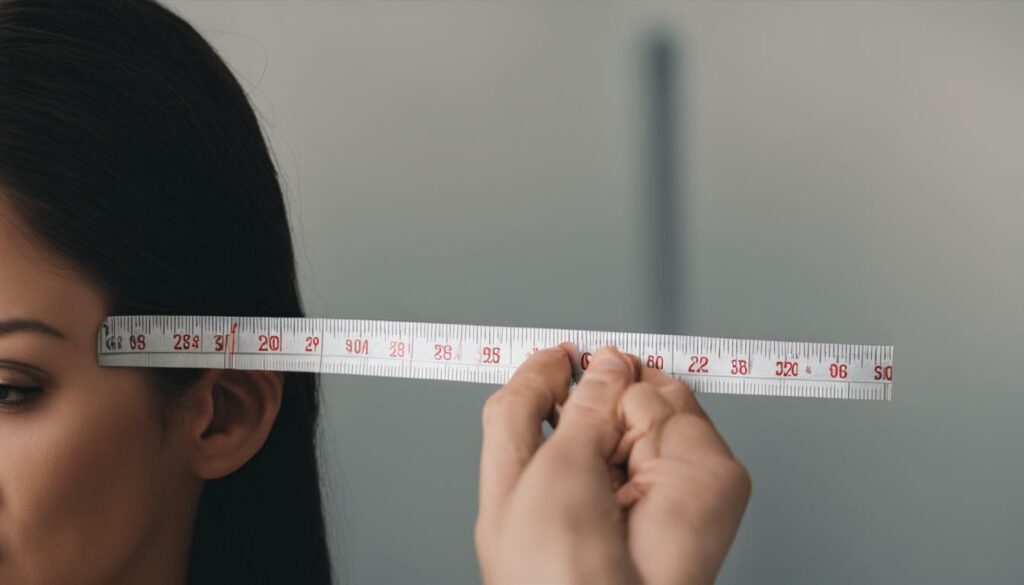
Now that you have measured your head, it’s time to determine the right helmet size. The first step is to consult the manufacturer’s helmet size guide. Keep in mind that different brands may have variations in fit and shape, so always refer to the specific brand’s size chart. If you’re unsure about which size to choose, opt for the smaller size as helmets tend to break in and loosen up over time.
It’s also important to consider the shape of your head. Some helmets are designed for round heads, while others are suited for oval-shaped heads. Try on several helmets to determine which shape works best for you.
Another factor to consider is additional padding. Most helmets come with removable padding that can be adjusted to achieve a better fit. If you’re in-between sizes, you can add or remove padding to achieve a more customized fit.
Finally, ensure that the helmet sits level on your head and does not shift or rock from side to side. The chin strap should be snug but not too tight, allowing you to breathe and speak comfortably. Remember, a properly fitted helmet is essential for optimal safety on the road.

Tip: If you’re purchasing a helmet online, be sure to reference the size chart and measure your head before placing your order. Helmets that do not fit properly cannot be returned for safety reasons.
Ensuring a Proper Helmet Fit
Now that you have determined your helmet size, it’s important to ensure a proper fit for optimal safety. Here’s how to achieve a snug and secure helmet fit:
Adjust the Straps
Start by adjusting the chin strap so that it comfortably fits around your chin and is snug but not too tight. Next, adjust the side straps so that they fit snugly around your ears without causing discomfort.
Check the Helmet’s Position
The helmet should sit level on your head, without tilting forward or backward. Additionally, the helmet should cover your forehead, but not obstruct your vision.
Try on Different Sizes and Brands
Remember, helmet sizing can vary between brands and styles. Even if you have determined your helmet size, it’s worth trying on different brands and models to find the best fit for your head and riding style.
Consider Additional Padding
If your helmet feels slightly loose even after adjusting the straps, try adding extra padding to achieve a more secure fit. Many helmets come with removable padding that can be adjusted or replaced.
By following these steps and ensuring a proper helmet fit, you can ride with confidence knowing you are well-protected.
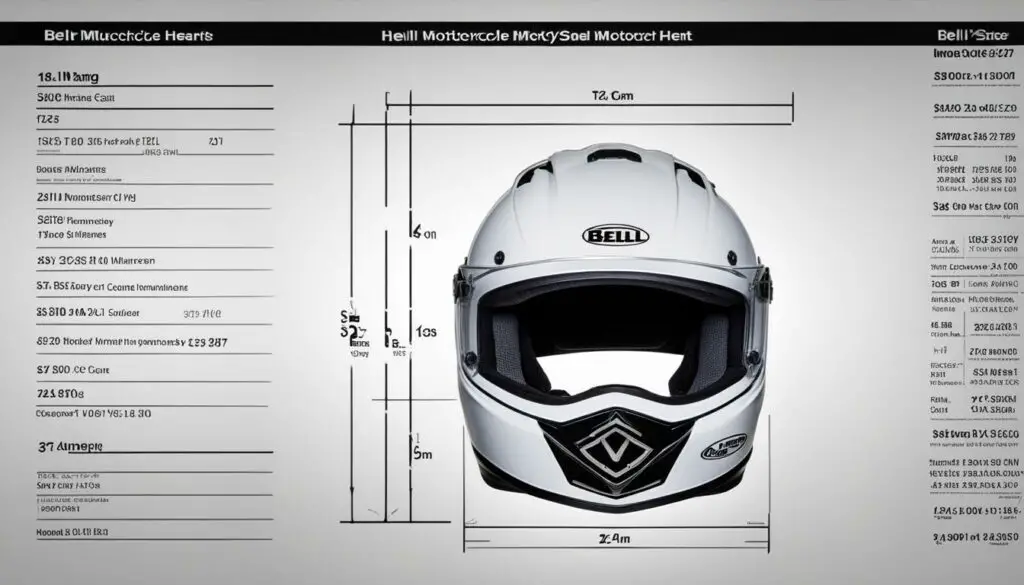
Now that you’ve measured your head and understand how helmet sizing works, it’s time to choose the right style and brand. Different helmet styles and brands may have variations in fit and shape, so it’s important to consider this as you make your decision.
If you’re looking for a racing helmet, brands like Bell offer a range of sizes and shapes specifically designed for high-speed performance. The Bell racing helmet size chart and the Bell racing helmets size chart can help you find the right fit for your head.
When it comes to choosing a helmet style, consider the type of riding you’ll be doing. Full-face helmets provide the most coverage and protection, while open-face helmets offer a more open riding experience. Half helmets are a good compromise between the two.
When shopping for a helmet, be sure to try on a few different styles and brands to see what feels most comfortable. Remember, a well-fitted helmet is crucial for your safety on the road.
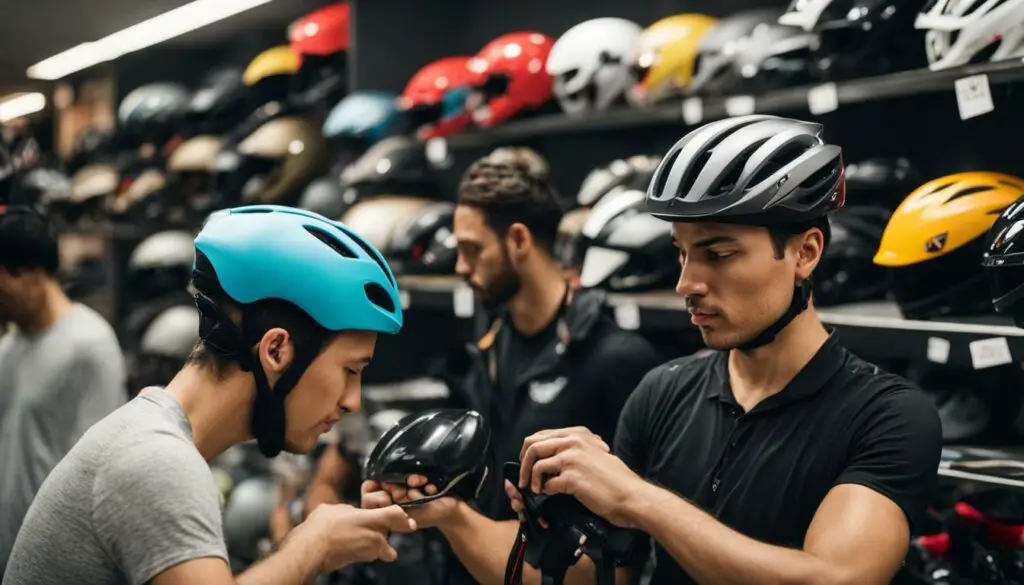
It’s also important to consider other factors when choosing a helmet, such as ventilation and weight. A well-ventilated helmet can help keep you cool while riding in hot weather, while a lightweight helmet can reduce neck strain during longer rides.
Lastly, be sure to choose a helmet that meets safety standards set by organizations like the Department of Transportation (DOT) or Snell Memorial Foundation. Look for certification labels on the helmet to ensure it meets these standards.
By considering all of these factors, you’ll be well on your way to choosing a helmet that fits perfectly and provides optimal protection on the road.
Common Helmet Sizing Myths Debunked
When it comes to helmet sizing, there are many myths that can lead to confusion and misinformation. Let’s take a look at some of the most common helmet sizing myths and debunk them once and for all:
-
- Myth #1: Helmet size is the same as hat size.
This is a common misconception that can lead to ill-fitting helmets. While hat size may be a good starting point, it is not an accurate measurement for helmet sizing. Helmets are designed to fit snugly to the head, while hats are not. It’s important to measure your head specifically for a helmet, using the steps outlined in this guide.
-
- Myth #2: Helmets stretch over time.
This is simply not true. In fact, helmets are designed to maintain their shape and fit over time. If your helmet feels too tight initially, it’s unlikely to stretch enough to become comfortable. It’s better to choose a helmet that fits snugly from the start, and break it in gradually.
-
- Myth #3: A larger helmet is more comfortable.
While a larger helmet may feel more comfortable initially, it’s important to remember that comfort should not be the sole factor in helmet sizing. A helmet that is too large may not provide adequate protection in the event of an accident, and can also shift around during a ride, compromising safety and comfort. Instead, choose a helmet that fits snugly and comfortably from the start.
-
- Myth #4: All helmets fit the same.
While helmets may look similar on the outside, the fit and shape can vary significantly between brands and styles. It’s important to try on different helmets and find one that fits your head shape comfortably. Use the steps in this guide to accurately measure your head, and don’t be afraid to try on multiple helmets before making a decision.
-
- Myth #5: One size fits all.
This is simply not true. Helmets are designed to fit specific head sizes and shapes, and one size does not fit all. It’s important to measure your head accurately and choose a helmet that is the right size for you. This will not only ensure optimal safety, but also increase comfort during your rides.
-
- Myth #6: S size helmets are only for children.
This is a common misconception, but it’s important to remember that head size, not age, determines helmet size. S size helmets can be a good option for adults with smaller head sizes. Use the steps in this guide to measure your head accurately and choose the right size helmet for you.
Don’t let these common helmet sizing myths lead you astray. Stick to the facts and use the steps outlined in this guide to ensure the perfect fit for your helmet.
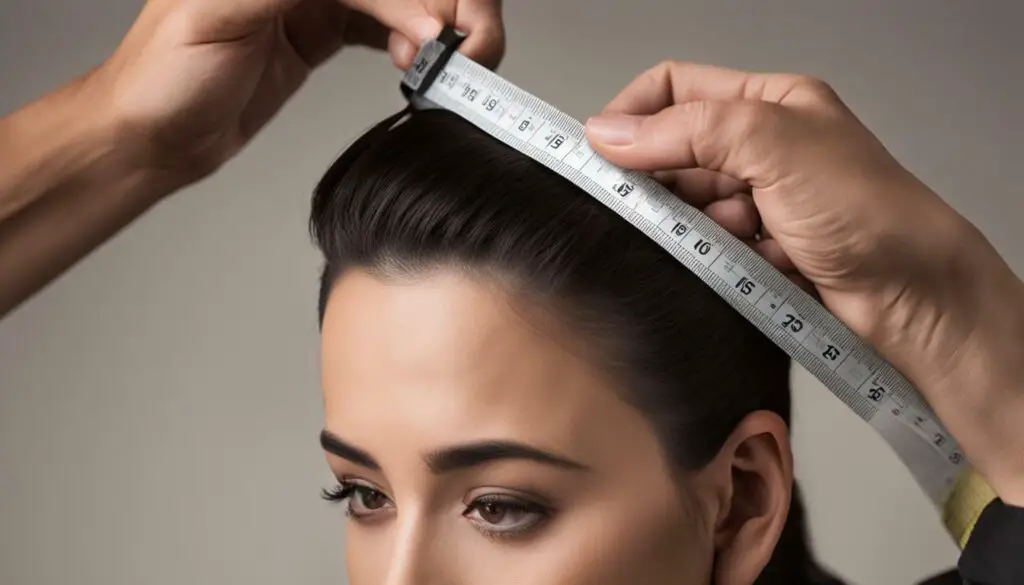
When it comes to motorcycle helmets, proper sizing is essential for safety and comfort on the road. The last thing you want is a helmet that’s too loose or too tight, compromising your protection. That’s why it’s crucial to consider the following key factors when choosing a motorcycle helmet:
Helmet Shape
Motorcycle helmet shapes vary depending on the brand and model. Some helmets have a round shape, while others have an intermediate oval or long oval shape. It’s important to choose a helmet that matches the shape of your head for the best fit. Bell Helmets, for instance, offers helmets with different shapes to accommodate different head shapes.
Helmet Size Chart
Most motorcycle helmet manufacturers provide a size chart to help you determine the right helmet size for your head circumference. The chart typically includes measurements in inches or centimeters and corresponding helmet sizes. It’s important to measure your head accurately and consult the size chart before purchasing a helmet.
Here’s an example of Bell Helmets’ size chart:
| Helmet Size | Circumference (cm) |
|---|---|
| XS | 53-54 |
| S | 55-56 |
| M | 57-58 |
| L | 59-60 |
| XL | 61-62 |
| XXL | 63-64 |
Keep in mind that helmet size charts may differ between brands, so always consult the specific manufacturer’s chart.
Additional Factors
Other elements to consider when choosing a motorcycle helmet include the helmet’s weight, ventilation, noise level, and safety ratings. It’s important to find a helmet that suits your riding style and personal preferences while meeting safety standards.
Fitting Guide
Once you’ve chosen a helmet, it’s essential to ensure a proper fit. Follow the manufacturer’s fitting guide to adjust the helmet to your head’s shape and size. For example, Bell Helmets instructs riders to adjust the chin strap, cheek pads, and crown liner to achieve a snug and secure fit.
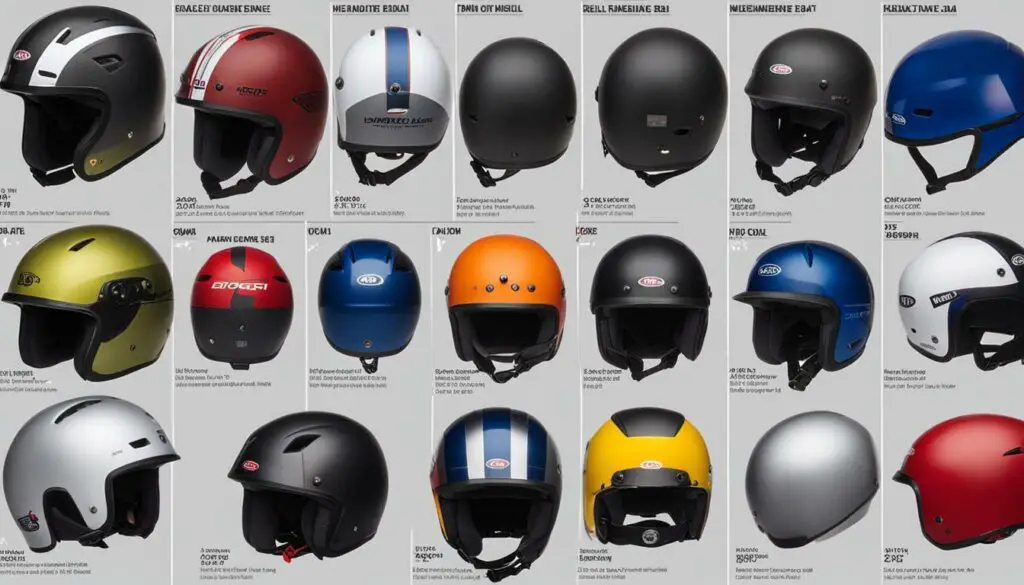
By considering these key factors and following the manufacturer’s fitting guide, you can ensure a safe and comfortable ride with your motorcycle helmet.
Sizing Chart for Motorcycle Helmets: Finding the Perfect Fit
Motorcycle helmet manufacturers often provide sizing charts to help customers find the perfect fit. These charts typically include measurements for head circumference and corresponding helmet sizes. Using a sizing chart can save time and ensure a more accurate fit.
It’s important to note that sizing charts can vary between brands, so it’s essential to refer to the specific manufacturer’s chart rather than assuming that all charts are the same. Additionally, it’s important to ensure that the helmet shape and style you are considering is consistent with your head shape and the sizing chart provided.
When using a sizing chart, measure your head circumference at the widest point, which is typically just above the eyebrows and ears. Once you have this measurement, compare it to the manufacturer’s sizing chart to determine the appropriate helmet size.
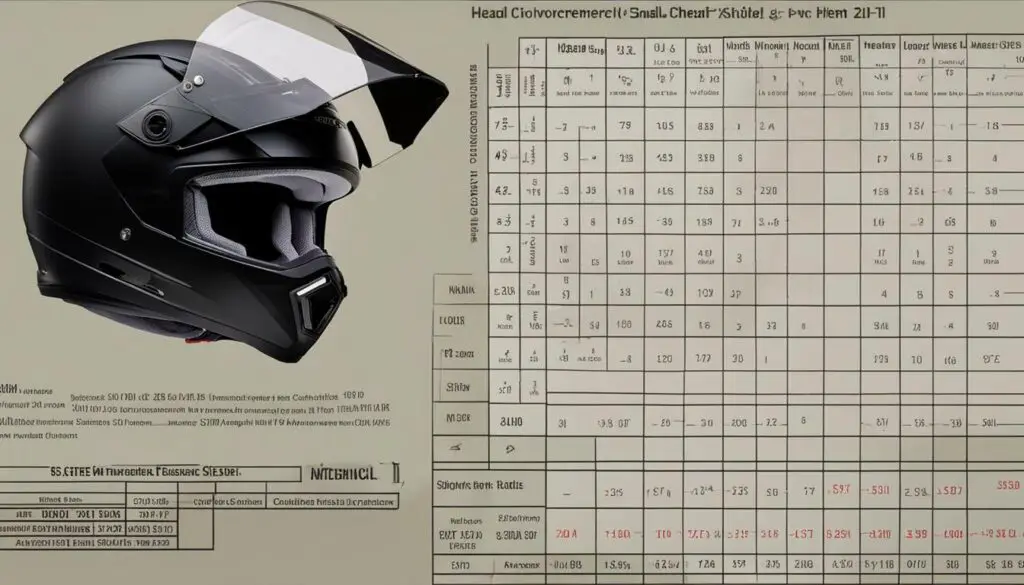
Remember, a well-fitted helmet is critical to your safety while riding. Take the time to measure your head accurately and refer to sizing charts provided by reputable manufacturers to ensure the perfect fit.
Taking Care of Your Helmet: Maintenance Tips
Once you have found the perfect fitting helmet, it’s important to take care of it to ensure its longevity and performance. Proper maintenance is particularly critical for motorcycle helmets, which are subject to harsh outdoor conditions and regular wear and tear. Here are some tips for maintaining your helmet:
Cleaning Your Helmet
Keeping your helmet clean is essential for both hygiene and visibility while riding. Start by removing any loose debris from the helmet’s surface using a soft-bristled brush or a microfiber cloth. Then, use a mild soap and lukewarm water to wipe down the exterior of the helmet, taking care not to saturate the lining. Rinse the helmet thoroughly and allow it to air dry in a well-ventilated area.
Storing Your Helmet
Proper storage is crucial for maintaining your helmet’s shape and integrity. Avoid storing your helmet in direct sunlight or extreme temperatures, as this can damage the interior padding and outer shell. Instead, store your helmet in a cool, dry place, preferably in a helmet bag or protective case.
Replacing Your Helmet
Over time, your helmet may experience wear and tear that can compromise its safety features. It’s important to replace your helmet at least every five years, even if it appears to be in good condition. Additionally, replace your helmet if it has been involved in a crash, as its protective capabilities may be significantly diminished.
By following these maintenance tips, you can keep your helmet in top condition and ensure optimal performance while riding. Remember, a properly fitting and well-maintained helmet is your best protection against head injuries.

When it comes to helmet sizing, there’s no one-size-fits-all approach. Finding the right helmet size requires time, effort, and attention to detail. But the benefits of a well-fitted helmet far outweigh the effort it takes to find one.
Remember, a helmet that doesn’t fit correctly can compromise your safety on the road. An ill-fitted helmet can shift or come off during an impact, leaving you vulnerable to head injuries.
With the steps outlined in this guide, you now have the knowledge and resources to find a helmet that fits like a glove. By measuring your head accurately, decoding helmet sizing charts, and ensuring a proper fit, you’ll be equipped to choose a helmet that enhances your safety and riding experience.
Stay Safe on the Road
Investing in the right helmet size is just one step towards staying safe during your rides. Remember to also pay attention to other safety measures, such as wearing appropriate riding gear, adhering to traffic laws, and practicing defensive driving.
By prioritizing safety on the road, you can mitigate risks and enjoy your rides with confidence.
FAQ
How important is helmet sizing?
Helmet sizing is extremely important as it ensures a proper fit and maximizes your safety while riding. Wearing a helmet that is too loose or too tight can compromise its effectiveness in protecting your head.
How do I determine my helmet size?
To determine your helmet size, you need to measure the circumference of your head. Use a measuring tape and wrap it around the widest part of your head, just above your eyebrows. Make sure the tape is snug but not too tight. Record the measurement in inches or centimeters.
How do I read a helmet size chart?
Helmet size charts typically include head circumference measurements and corresponding helmet sizes. Locate your head measurement on the chart and find the corresponding helmet size. It’s important to note that different brands may have slightly different sizing, so always refer to the specific brand’s size chart for accuracy.
Can I use my hat size as a reference for helmet size?
No, hat sizes are not a reliable reference for helmet sizing. Head shapes and sizes can vary significantly, and helmets are designed to provide a snug and secure fit. Always measure your head circumference using a measuring tape for accurate helmet sizing.
How should a properly fitted helmet feel?
A properly fitted helmet should feel snug and secure on your head, without any pressure points or excessive movement. It should sit level on your head, covering your forehead and not obstructing your vision.
How often should I replace my helmet?
It is recommended to replace your helmet every 5 years or if it has been involved in a crash, as the integrity of the helmet can deteriorate over time. Additionally, if the helmet no longer fits properly or shows signs of wear and tear, it should be replaced.
Can I modify the padding or straps of a helmet to make it fit better?
It is not recommended to modify the padding or straps of a helmet, as this can compromise its safety and effectiveness. Helmets are designed and tested with specific materials and configurations to provide optimal protection. If your helmet does not fit properly, it is best to try a different size or model.
Should I choose a helmet based on the brand or style?
While brand and style preferences are important, the most crucial factor when choosing a helmet is the fit. Focus on finding a helmet that fits properly and provides the necessary safety features. Once you have identified the right size, you can explore different brands and styles within that size range.
Are helmet sizes consistent across different brands?
Helmet sizes can vary slightly between different brands, so it’s important to refer to each brand’s specific size chart for accuracy. It’s always recommended to try on a helmet before purchasing or consult with a knowledgeable retailer for guidance.
How do I take care of my helmet?
To take care of your helmet, you should follow the manufacturer’s instructions for cleaning and maintenance. Generally, you should clean the exterior with mild soap and water, avoid using harsh chemicals, and store the helmet in a cool and dry place away from direct sunlight. Regularly inspect the helmet for any signs of damage or wear and replace it if necessary.

